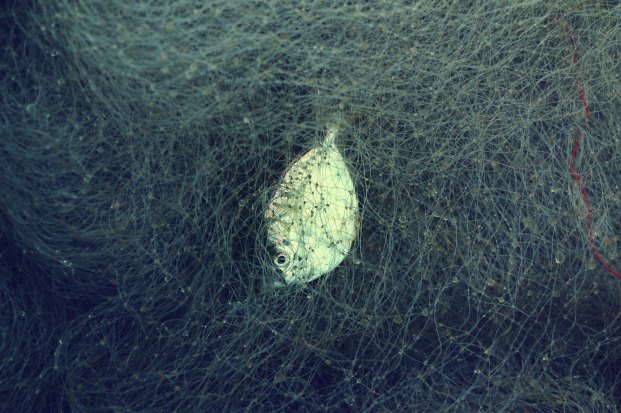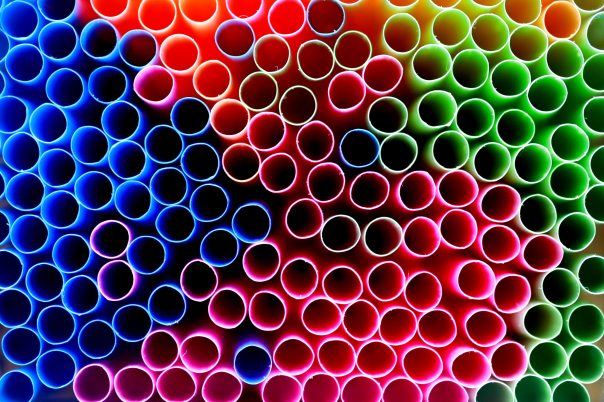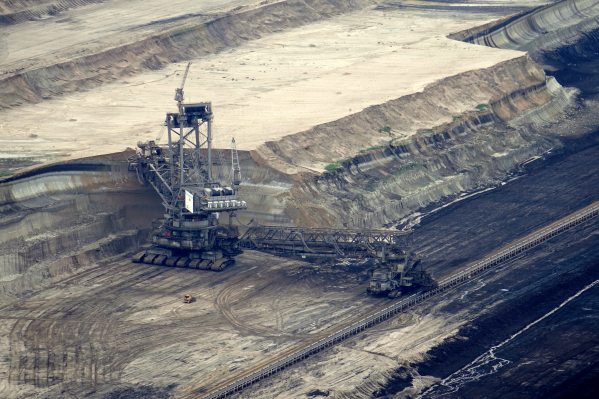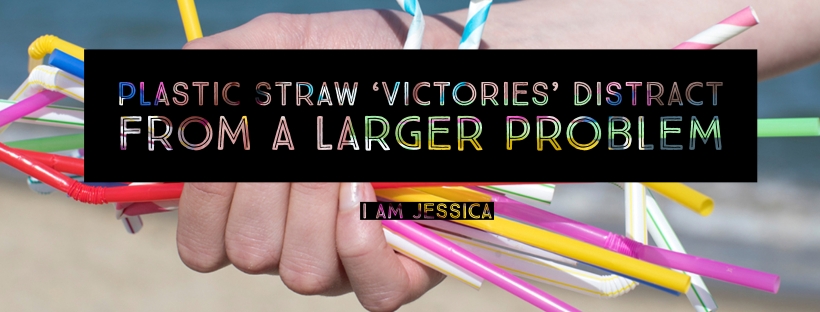*WARNING – this post contains content that some may find distressing*
Not using plastic straws is the huge thing at the moment. People are really jumping the bandwagon (myself included). And while the energy and sentiment behind the movement is really fantastic, it’s all a little misguided. Plastic straws have become public enemy #1 recently, on the grounds of ocean plastic pollution and the impact that it has on wildlife. However, plastic straws make up a tiny fraction of ocean plastic (0.025%) and considering just how much plastic is in the ocean – the straws really aren’t our biggest problem.

We are letting ourselves get distracted by our faux-environmentalism from the real problem. Of all ocean plastic, 46% is discarded fishing gear which has a much greater potential to do harm to wildlife than a straw could ever do. But, despite this fact, you see everywhere that people are boycotting the straw – from Starbucks, McDonald’s etc. So yes, you’re not using a plastic straw, but if you’re still eating fish then you probably need to check your sense of achievement. Plastic straws are just a very easy victory, and perfect for companies who are looking to bolster their ‘green’ image. If you think about it, how hard is it for a company to switch the type of straw they’re using? Not very hard at all. But they make a big song and dance about it, because they want to keep us focussed on this so we don’t ask them for anymore. I sound like a conspiracy theorist, I know, but I’m probably right.

hello? sir? you seem to have forgotten your net
Also, all of this plastic-straw reduction effort is concentrated in The UK, The US, and Australia which is only responsible for 1.1 % of plastic in the ocean. The main offender in ocean plastic pollution is Asia (primarily China) who are responsible for 80% of the plastic in the ocean. I believe we tend to turn a bit of a blind eye to this as they produce all of our stuff. You could probably pick up any number of things in your house to see ‘Made in China’ on the back. In January of this year, China stopped taking the recycling of other countries (rubbish was being shipped from all over the world to be recycled!) in an effort to get it’s own waste under control. And many other countries in Asia are placing levies or outright bans on single-use plastics.
This kind of impact on wildlife is what sparked the current War on Straws – which, I agree, is hard to watch. But straws play a minute roll in plastic pollution but such a disproportionately large part in our war on plastic. We really are focussing far too much of our energy on straws when their are SO MANY other plastic items that we categorically DON’T NEED. Like, do cigarette butts really need to be made of plastic?! I’m not denying straws causes issues, but they’re just not our biggest one.
Plastic Straws Save Lives:
Plastic straw bans are being phased out all over the place – but this can really hurt people who rely on them to live a normal life. This YouTube video was really eye-opening. It made me think about a lot of things I hadn’t even considered (being an able-bodied person). Please watch, as it explains this point better than I ever could.
Ableism:
Discrimination or prejudice against people with disabilities, especially physical disabilities.
You may not think of yourself as albelist but I can guarantee, if you are able-bodied, that you have been at some point – likely, unwittingly, of course. But, unfortunately, you are fallible – you’re only human. I commented on a post a couple of months ago where a woman was talking about how much the disabled community needs plastic straws. I quite naively talked about metal reusable straws and how in Brighton some bars are doing like a rent-a-straw thing (where you pay a refundable deposit to use the straw and return it, or you can keep the straw). She did not respond to my comment – I suppose she’s tired of hearing people’s ableist bullshit (fair enough, really)! Since that time, however, I have done a lot of learning. Accessibility for disabled people needs to be the benchmark from which we progress – not something we accommodate as an afterthought. If you are able-bodied, by all means, remove plastic straws from your life – but those who need them should have unfettered access to them.
The straw bans are well-intentioned but as you can see plastic straws aren’t the real problem here (and for some, the only solution). There are so many plastic-covered areas where our efforts would be better focussed. As an able-bodied person, I have the privilege to choose to use a reusable straw (or not to use a straw at all) – some people do not have this privilege.
Reusable Straws Aren’t All That Much Better:
The whole point of having a reusable straw is to re-use it over and over again. Which is hard for me. I am very liable to lose things, especially when I’m drunk – which is the only time I really want to use a straw (to save my lipstick)! I have had, and lost, at least 4 or 5 metal straws now. Which can’t be good for the environment, so I when I inevitably lose my current ones (I will try my best not to!) I will not be buying anymore. I will just drink my drink sans straw.

[animals] die if we do, [people] die if we don’t
So to put what I’m about to cover into context, this is the environmental impact of producing one disposable plastic straw (in CO2 equivalent). One 0.4g straw generates 0.8g CO2eq during production. Obviously, there are many other environmental impacts but this is just the easiest to compare. I took the data from this paper for the CO2 of propylene which is the base product for polypropylene (plastic) that the straws are made of. Obviously, much like almost everything else, these straws are primarily made in China and then shipped everywhere – this is not included in this value.
*
Metal:
Steel is produced from Iron ore. China is the world leader in iron ore mining, closely followed by Australia. Iron ore is mined using an opencast mining technique – this essentially means that they just dig a big ol’ hole to get to what they need. This method of mining is cheap and quick but also very destructive. Open cast mines completely obliterate the immediate environment and pollute water sources – there are ways to mitigate these but as much of the mining is done in low-income countries (Australia excepted) these are likely to be minimal.

More steel is being produced now than ever before and most of it comes from China. China produces ~50% of the world’s steel – so iron ore has to be imported from all over the world to keep up with this production (on top of what they already produce). That’s a lot of moving things to and from China (steel is used worldwide, after all).
To produce one 10g stainless steel straw 29g of CO2 is produced. So, a metal straw would need to be re-used (and actually replace straws) 36 times to have the same carbon footprint as one single-use plastic straw. This figure doesn’t account for any of the other environmental impacts incurred during production or during disposal.
*
Glass:
You may or may not know that glass is made from sand! But not necessarily the same sand you’d find at your local beach – for glass, you need pure silica sand. Silica sand is formed by the weathering of quartz rocks. The silica sand needed for glass production is usually mined using the opencast mining technique mentioned above. I visited a silica sand beach of a freshwater lake on Fraser Island in Australia – we were told that the sand is a very good exfoliant and we should give ourselves a good rubbing on the beach. Anyway, glass is made by heating this silica sand at very high temperatures with calcium carbonate and sodium carbonate to ensure it is clear and strong.

new frontier
To produce one 16g glass-straw 134.4g of CO2eq is generated. So, a glass straw would need to be re-used (and replace a plastic straw) 168 times to have the same carbon footprint as a plastic straw. This figure doesn’t account for any of the other environmental impacts incurred during production or during disposal.
*
Bamboo:
Bamboo is generally considered very ‘green’. It is extremely fast growing and so needs to take up a lot of carbon during growth – which is great. But demand for bamboo now is so high that that the naturally occurring sources of bamboo simply do not produce enough. This has resulted in natural forests being replaced with bamboo plantations – which is not great. Also, due to bamboo’s amazing growing efficiency, it is highly invasive – it will grow anywhere with the right conditions and can cause many problems in ecosystems. It has caused problems as an invasive species in many countries, so bamboo’s increasing popularity as an eco-alternative may spell disaster for some species.

Producing one 6g bamboo-straw, generates 0.007g of CO2eq. A bamboo straw would need to be re-used 1 time to have a lower carbon footprint than a single-use plastic straw. So, these are the best option, in terms of carbon, for your reusable straw needs! However, this figure doesn’t account for any of the other environmental impacts incurred during production or during disposal. Bamboo is mostly grown and processed in Asia, it is then shipped all over the world. Just because it has a low carbon footprint in production, does not mean it will do by the time it gets to you.
*
Obviously, if you already have reusable straws, reuse them! But if you set out to buy yourself some shiny new ones, then try not to get sucked in by ‘green’ or ‘eco’ claims – they are never what they seem. And, ask yourself, how much do you actually need a straw? You could also go super old school and make your own eco-straws from straw (like these ones)! You can make them from the waste of wheat harvesting – the wheat sheaf. These can then simply cut to size and washed – voila a all-natural and biodegradable straw! A straw made from straw.
When are we gonna wake up and smell the plastic? Plastic straws are not our biggest enemy and for some, they are an essential part of life. There are so many other unnecessarily plastic items which could and should be our focus.
I’m not saying you should give up on your aversion to plastic straws – keep it up! But when our environmentalism comes at the expense of people’s lives, and ends up being actually kinda worse for the environment (reusable straws), then we need to go back to the drawing board.
Thanks for reading – please leave any thoughts you have in the comments!
Jessica xx



Very interesting. Perhaps we need a straw holder attached to our keys or mobile device. Ready for any occasion !
LikeLiked by 1 person
Yes, that would help stop losing my resuables!
LikeLike
Going along with the latest Big Thing is what so many do, to “stay current”. This post, as part of an examined life, is excellent. I have two steel straws and will use them, but as long as I am able to pick up a glass or cup and sip from it, without an aid, that allows me to have less of a carbon footprint than using any sipping aid.
LikeLiked by 1 person
Yes, straws are an unnecessary extra for a lot of people, no matter what they are made of. But they should still be available for those who need them! Thanks for reading 🙂
LikeLiked by 1 person
This is a brilliant post and a definite eye-opener. I hate to admit it but I’m one of those people that haven’t stuck to this new trend. I can’t stand reusable straws, they affect the taste, deteriorate and don’t bloody bend! I’d rather not use them at all personally.
Aren’t plastic straws recyclable anyway? Maybe people need to get down with recycling and companies need to make all their packaging recyclable or reusable.
LikeLike